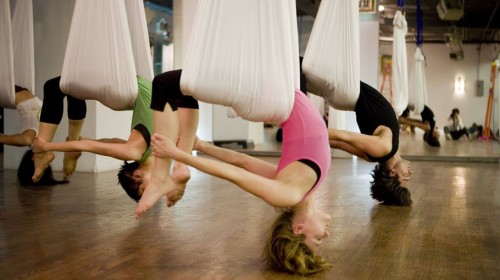Are you suffering from a post-lunch energy dip? Learn how to keep yourself energised throughout the day.
Research shows that the most common time for energy slumps is 2.15pm. This is when many people hit a brick wall – and wish they could hit a soft pillow. Low blood sugar and the body’s circadian rhythm hitting a natural low are the culprits. But you can take action.
Don’t fight it
“Short naps of five to 15 minutes are very effective at promoting energy renewal and increasing cognitive function,” says Dr Nerina Ramlakhan, sleep and energy coach at Capio Nightingale Hospital, London. Studies show grabbing 40 winks boosts memory too. You don’t have to nod off – in fact, you want to avoid deep sleep. “Just sit or lie comfortably in a well-ventilated room, relaxing muscles and breathing deeply from the stomach. You’ll approach a near sleep state without falling asleep and will probably remain conscious of your surroundings,” says Dr Ramlakhan. If you’re afraid to power-nap because it leaves you groggy, fear not. This is so common that it has a name – “sleep inertia”, the inability to shrug off sleep. The trick is not to cat-nap for more than 15 to 20 minutes, because the most you’ll get is light sleep, which is easy to get out of. Or sleep longer, say about 60 minutes, to get out of deep sleep and into REM.
Sleeping on the job was once grounds for dismissal but employers are coming round to power naps. After Cornell University found they increase productivity in the workplace, some US companies, including Nike and Deloitte Consulting, started encouraging employees to add an afternoon snooze to their to-do list, and some firms have installed beds or sleep pods.
Desk Y0ga
Desk Yoga stretches: link your hands, push your arms out in front of you and raise them above your head. Also try extending your legs in front of you and point and flex your toes. Then hug your knees, one by one, towards your chest.
Have an energy snack
This is not an excuse to reach for a whole milk chocolate bar. The high glycaemic index (GI is a measure of how high a food type pushes up your blood sugar) in a sugar-filled snack might give you an energy boost, but your blood sugars will crash quickly and you’ll probably feel more tired than ever, warns nutritional therapist Shona Wilkinson. Opt for a snack with low GI, such as oat cakes or hummus and carrot sticks, to raise your blood sugar levels steadily and keep them up, she says. For more information, visit www.glycemicindex.com. “It is worth a look because, whilst it’s usually sugary foods that are high GI, there are a few unusual ones to watch out for – French baguettes, watermelon, dried fruit and rice cakes,” says Wilkinson.
If you must have chocolate, stick to a few squares of high-quality plain chocolate as it contains less sugar and the richness means you’ll want less. And ideally, eat your snack half an hour before you know you’re likely to slump because it takes the body that long to convert what you eat to energy, says Wilkinson.
Revamp your lunch
Afternoon crashes are often the delayed result of too many simple sugars at a midday meal. Replace white bread, pastas and dessert with protein (chicken, tuna, hard-boiled eggs) and a slow-digesting carb (brown rice, lentils, sweet potato). Eating protein with carbohydrates can bring down the glycaemic load, so a turkey sandwich on wholewheat bread or a salad niçoise is a win-win. “Note that the glycaemic index of some foods changes according to how they are cooked,” cautions Wilkinson. “Baked potatoes are higher in the glycaemic index than boiled.”
Drink some water
Dehydration causes fatigue. It diminishes the capacity of most of our organs, especially the brain, kidneys and skin. “Research shows one in five of us consumes too little water,” says nutritionist Fiona Kirk. The recommendation is 1.5 litres, so aim for eight to 10 glasses a day, preferably keeping a filled bottle on your desk so you’re more likely to drink regularly and can monitor if you’re getting enough.
“If you’ve drunk no water by 2pm but have downed coffee, fizzy drinks and tea, you’re asking for headaches, concentration problems, mood swings and tiredness. The receptors for thirst and hunger are close together in the body, meaning that when you feel hungry, often what you’re really feeling is thirst.”
Never skip breakfast
Low afternoon energy is down to what we eat from the moment we get up and this meal does what it says on the tin: refuels the body by breaking a fast. You’ll need a healthy, sizable breakfast with complex (slow-digesting) carbohydrates and a little protein. Good choices include an egg on wholemeal toast, oats or sugar-free muesli with berries and natural yoghurt, or porridge with semi-skimmed milk and a banana.
Other slump-beating methods
* Essential oils: pop a couple of drops of a reviving essential oil into a tissue and inhale deeply. Citrus scents, along with peppermint and rosemary – are energy boosters.
* Avoid energy drainers: the most common are alcohol, caffeine, low-quality food, obesity, too much chocolate and dieting (slows metabolism, saps energy).
* Get active at lunchtime: if you can’t nip out for a quick walk at the time you feel a slump coming on during work, a preventive measure is an amble at lunchtime to lift your mood for the hours to come.










I am going to speak to my partner about this
Super cool